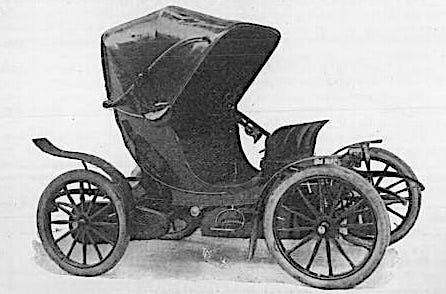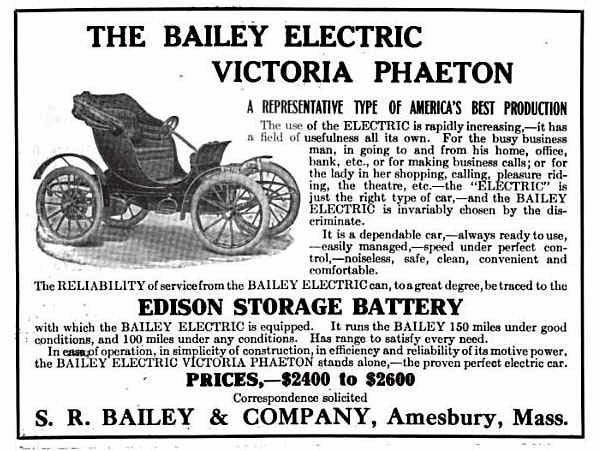The Electric Car: A 100-Year-Old Missed Opportunity Revisited
Written on
The Rise of Electric Cars in the Early 20th Century
Electric vehicles are currently experiencing a surge in popularity, heavily promoted across industrialized nations. However, the concept of electric cars is not a recent phenomenon; in fact, it dates back over a century.
In the United States, electric vehicles were quite popular at the dawn of the 1900s, making up approximately one-third of all cars on the road by 1900. Their sales remained robust for the next decade. During World War I, buying an electric vehicle was seen as a patriotic act, as it helped conserve precious gasoline for wartime efforts. So, what led to the decline of electric cars? The narrative involves a significant automotive revolution alongside the rise of the oil industry.
An Idea Ahead of Its Time
To truly appreciate the early electric vehicle, one must consider the state of transportation and electricity availability between 1850 and the early 1900s. Horse-drawn carriages were still common, even with the introduction of early automobiles—steam, gasoline, and electric. Steam-powered cars were impractical due to their need for constant water supply and lengthy start-up times. Gasoline vehicles were loud and emitted noxious fumes, requiring manual cranking to start. Electric cars appeared promising, but battery technology was still in its infancy, and electricity was just beginning to reach urban areas.
The journey of electric cars began in the 1830s when Robert Anderson of Scotland invented a motorized carriage, though it was impractical due to its non-rechargeable battery. The development of rechargeable batteries in 1859 spurred inventors on both sides of the Atlantic to build prototype electric vehicles. Around 1890, William Morrison from Des Moines, Iowa unveiled a six-passenger electric wagon that could reach speeds of fourteen miles per hour, marking the beginning of an electric vehicle trend.
In the early 1900s, poor road conditions outside cities meant automobile travel was largely confined to urban areas. This led to the manufacturing of electric vehicles, which were quiet, clean, and easy to drive—qualities that appealed especially to women. In the U.S., Thomas Edison was working on better batteries for these vehicles, even briefly collaborating with Henry Ford. Meanwhile, Ferdinand Porsche in Germany designed the first hybrid electric/gasoline vehicle around 1898.

By the early 1900s, electric taxis were already operating in cities like New York, Boston, and London. By 1912, electric cars made up thirty-eight percent of the U.S. automobile market.
Doomed by the Model T
Despite a promising start, the electric vehicle's demand began to wane following the launch of the Model T by Henry Ford in 1908. Ford's innovative manufacturing techniques allowed the Model T to be sold for $650 by 1912, while electric cars were priced at $1,750—almost three times higher. That same year saw the introduction of the electric starter for gasoline vehicles, eliminating the need for hand-cranking and boosting the popularity of gasoline cars even further. Only 6,000 electric vehicles were sold in the U.S. in 1912, compared to 82,000 Model Ts.
There were additional challenges for electric cars: batteries required frequent recharging, and while electricity was becoming more accessible in cities, it remained scarce in rural areas, making it inconvenient to recharge outside urban settings. The high cost of electric vehicles, combined with limited charging infrastructure, made them feasible mainly for affluent city dwellers.
Improved roadways connecting cities emerged in the 1920s, as did the discovery of Texas crude oil, leading to an abundance of cheap gasoline. Oil companies quickly gained control of the energy market, and gasoline vehicles surged in popularity, resulting in the decline of electric car manufacturers. Detroit Electric, one of the last electric vehicle producers, ceased operations in 1939. The gasoline automobile became the dominant mode of transport, overshadowing sporadic attempts to revive electric cars in the following decades.
A Revival of Interest
In the 1990s, a renewed interest in reducing oil dependency sparked new experimentation with electric vehicles. General Motors introduced the EV1, a two-seat electric vehicle, although it was not successful. A breakthrough came in 1997 when Toyota released the Prius, the first mass-produced hybrid electric car, igniting a resurgence in the electric vehicle market.

Today, factors such as climate change, air pollution, limited natural resources, and increasing energy consumption have significantly reshaped public perception of electric cars. Tesla has been pivotal in reviving the modern electric vehicle market by focusing on advanced technology. Numerous automobile manufacturers are now rapidly producing electric vehicles, with ongoing plans for more. Battery technology is improving, charging station availability is expanding, prices are becoming more competitive, and consumer interest is escalating.
In the early 1900s, electric cars were at the forefront of transportation innovation. Today, the same is true as we see a renewed fascination with electric vehicles. History tends to repeat itself, providing valuable lessons, even if we sometimes overlook them.
The first video, "Why Electric Cars Failed 100 Years Ago," explores the historical challenges that prevented electric cars from becoming mainstream a century ago.
The second video, "What it's Like to Drive a 100-Year-Old Electric Car," offers a unique perspective on the experience of operating an electric vehicle from the early 1900s.

Sources
Department of Energy, “The History of the Electric Car,” Sept. 15, 2014.
Motor Trend, “Gasoline vs. Electric Cars: Not Much Has Changed in 100 Years.”
Wilson, Kevin A. 2018. “Worth the Watt: A Brief History of the Electric Car, 1830 to Present,” Car and Driver, Mar. 15, 2018.